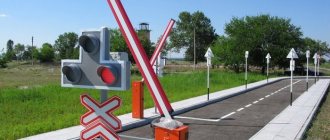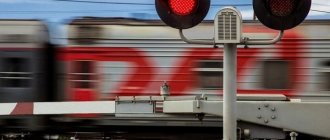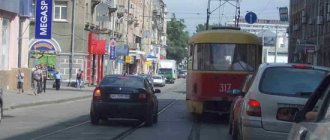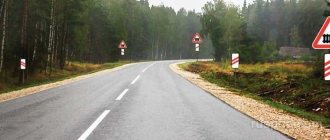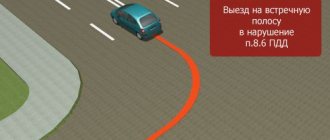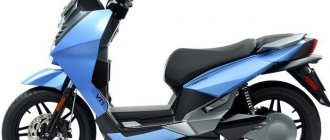What law regulates the rules for crossing railroad crossings?
To ensure an increased level of safety when crossing crossings, a huge number of protective systems are used. However, they are also powerless against reckless drivers or drivers who neglect the simple rules for driving on such sections of the road.
The main legal act, which specifies the main points for the passage of railway tracks, is the Traffic Rules.
Naturally, this topic is given a separate chapter, number 15, in a large set of rules.
Thus, it regulates:
- use of markings, road signs, light signals or a responsible employee;
- situations in the event of which it is strictly prohibited for vehicles to enter the crossing, as well as for pedestrians to enter the crossing;
- the possibility of parking for a long time or stopping for a few minutes for vehicles in the immediate vicinity of the crossing;
- rules that the driver, as well as his passengers, must know and follow in the event of an unexpected stop of the car at the crossing itself.
In the event of an intentional or unintentional violation of the rules prescribed in the traffic rules, the person driving the car is held accountable on the basis of Chapter 12 of the Code of Administrative Offenses of the Russian Federation.
Railroad crossing signs
| 1.1 | “Railway crossing with barrier” Installed: In a populated area 50 – 100 meters; Outside the populated area 150 - 300 meters. |
| 1.2 | “Railway crossing without a barrier” Installed: In a populated area 50 – 100 meters; Outside the populated area 150 - 300 meters. |
| 1.3.1 | “Single track railway” Installed: Just before the move. |
| 1.3.2 | “Multi-track railway” Installed: Just before the move. |
| 1.4.1 1.4.2 1.4.3 1.4.4 1.4.5 1.4.6 | “Approaching a railway crossing” The fewer stripes on the sign, the closer the crossing. |
Sign 1.1 “Railway crossing with barrier”
Road sign 1.1 “Railway crossing with a barrier” warns drivers about approaching a railway crossing that is equipped with a barrier.
Outside a populated area, sign 1.1 is installed at a distance of 150-300 m, in a populated area - at a distance of 50-100 m. The sign can also be placed at a different distance, and the sign is used with the sign 8.1.1 “Distance to the object”.
Main characteristics of sign 1.1
According to the traffic rules, the railroad crossing road sign, designated 1.1, is a warning sign.
And if a motorist meets him on the road, it will mean that he is approaching the intersection with a railway track that has a barrier. Since this sign has a warning definition, it is framed in red. It has the shape of a triangle, looking at an acute angle upward, with the image of railway tracks on a white background.
The driver, when he encounters such a sign, must slow down and be prepared for the fact that the barrier at the crossing may be closed. This means that you will have to wait for some time until the locomotive passes this section of the route.
Then the road will again become open for vehicles, and they will be able to cross the railway track without hindrance.
Such signs, which are located outside populated areas, must be repeated a total of at least 6 times. This is done in order for the driver to show maximum attention and vigilance when approaching a rather dangerous section of the road.
Sign 1.3.2 “Multi-track railway”
Signs “Single-track railway” and “Multiple-track railway” are installed in front of all railway crossings without a barrier, across a railway with one or two or more tracks, respectively.
When the crossing is equipped with a traffic light signal, the signs are installed on the same support as the traffic light, and if there is no traffic light, then they are placed at a distance of 6 - 10 meters from the nearest rail.
Signs 1.4.1 - 1.4.6 “Approaching a railway crossing”
These signs serve to further inform drivers about the degree of approach to a railway crossing outside a populated area.
Signs 1.4.1 - 1.4.6 “Approaching a railway crossing” are installed on roads with two or more lanes for traffic in both directions before each crossing, and on roads with one lane - when the visibility distance of the crossing is less than 300 m.
Signs 1.4.1 - 1.4.3 are installed on the right side of the road, and signs 1.4.4 - 1.4.6 - on the left.
Signs 1.4.1 and 1.4.4 (with three stripes) are installed with the first (main and backup) sign 1.1 or 1.2 in the direction of travel, signs 1.4.3 and 1.4.6 (with one stripe) - with a repeated sign 1.1 or 1.2, and signs 1.4.2 and 1.4.5 (with two stripes) - independently, at an equal distance between the first and repeated sign 1.1 or 1.2.
The diagram shows that signs 1.4.1, 1.4.3, 1.4.4 and 1.4.6 are placed under sign 1.1 or 1.2, signs 1.4.2 and 1.4.5 are located between them. They are placed at a height equal to the height of installation of signs 1.4.1, 1.4.3, 1.4.4 and 1.4.6.
Thus, if on your way you come across a combination of signs 1.1 “Railway crossing with a barrier” or 1.2 “Railway crossing without a barrier” with signs 1.4.1 or 1.4.4 (with three inclined stripes), then before the railway crossing you There is a minimum of 150 and a maximum of 300 meters left.
It immediately becomes clear (from the image on the sign) which railway crossing is ahead - with or without a barrier. Accordingly, it makes sense to pay attention to the organization of passage through the railway tracks, and be prepared, if necessary, to stop at the place established by the traffic rules.
Considering the speed of the car, you can drive directly to the crossing very quickly. I recommend the article (answer to the question) Stop line before a railway crossing.
Railway crossings are divided into regulated and unregulated
The regulated ones include railways. crossings equipped with crossing alarm devices or serviced by an employee on duty (Fig. 1.13.1).
Rice. 1.13.1 — Controlled railway crossing
Unregulated crossings include crossings that are not equipped with crossing signaling devices and are not serviced by an attendant (Fig. 1.13.2).
Rice. 1.13.2 — Unregulated railway crossing
At uncontrolled railway crossings, drivers of vehicles located at a distance of no more than 50 m from the nearest rail must be provided with visibility of a train approaching from any side in accordance with the standards for ensuring the visibility of a train approaching a railway crossing, specified in Table 1.13.2.
Standards for ensuring the visibility of an approaching train
To the railway crossing
table 1.13.2
| Train speed, km/h | 141 — 200 | 121 — 140 | 81 — 120 | 41 — 80 | 26 — 40 | 25 or less |
| Visibility distance, m, not less |
Construction and equipment of crossings
Railroad crossings should be located primarily on straight sections of railways and highways outside of excavations and places where satisfactory visibility conditions are not provided.
The intersection of railways and roads is carried out mainly at right angles. If this condition cannot be met, the acute angle between intersecting tracks and roads is at least 60 degrees.
On the railway crossings for at least 10 m from the outermost rail, the road in the longitudinal profile must have a horizontal platform or a vertical curve of large radius, or a slope due to the excess of one rail over the other when the intersection is in a curved section of the railway. ways.
Newly created protective forest plantations must provide drivers of vehicles at a distance of 50 m or less from the crossing with visibility of an approaching train at a distance of at least 500 m.
roadway
The width of the carriageway of the crossing must be equal to the width of the carriageway of the highway, but not less than 6 m, and the width of the flooring in places where livestock is passed must be at least 4 m.
Moving flooring
The railroad crossing deck must conform to the design approved by the owner of the infrastructure or the owner of the non-public railroad tracks. The path under the deck can be on either wooden or reinforced concrete sleepers (Fig. 1.13.3).
Rice. 1.13.3
On the outside of the track, the deck should be flush with the top of the rail heads. Deviation of the top of the rail head located within the roadway relative to the coating is not allowed.
more than 2 cm.
Inside the track, the flooring must be higher than the rail heads within
1 - 3 cm.
When the decking material is rubber-corded or polymer, lowering the inter-rail decking below the level of the rail heads is not allowed.
At operating crossings before reconstruction as planned
the elevation of the flooring inside the track is allowed within 3 - 4 cm.
There are three types of modern railway decks:
reinforced concrete, rubber-cord and rubber-reinforced concrete.
Gutters at the crossing
Depending on the design of the deck, according to a standard design, counter rails can be laid within the deck to ensure unhindered passage of wheel pairs of rolling stock. Their ends at a length of 50 cm are bent inside the track by 25 cm. The width of the gutter is set in the range of 75 - 110 mm, and the depth is at least 45 mm.
At crossings with attendants inside the track of each track (on single-track sections - on both sides) at a distance of 0.75 - 1.0 m from the flooring, devices in the form of metal tubes are fixed for installing portable train stop signals (red board, lantern), and a device to determine the lower oversize of the rolling stock, as well as the fender beam (Fig. 1.13.5, 1.13.6).
Rice. 1.13.5
Device for determining bottom oversize
Rice. 1.13.6
A wooden plank measuring 140*1300*15 mm is secured against vertical and horizontal displacement with one bolt and nut or a roller with a cotter pin.
Barrier posts, crossing signal traffic light masts, fences, railings and guide posts should be located at a distance of at least 0.75 m from the edge of the roadway (Fig. 1.13.7).
Rice. 1.13.7
Guide posts are installed on both sides of the crossing at a distance of 2.5 to 16 m from the outer rails every 1.5 m.
The total number of installed guide posts at the crossing
there must be at least 40 pieces.
Reflective elements on the posts should be red in the direction of travel on the right, and white or, more preferably, yellow on the left.
Road and signal signs
Signal sign "C"
On the approaches to the railway At crossings on the railway side, permanent warning signs “C” are installed indicating that train drivers are blowing a whistle. Signs are installed on the right side in the direction of train movement at a distance of 500-1500 m from crossings, and on sections where trains operate at speeds of more than 120 km/h - at a distance of 800-1500 m.
Rail crossing options
In order to master the important rules for traveling railway tracks, you should know that all areas of this type equipped on routes are divided into several categories:
- With the implementation of traffic regulation, that is, regulated.
- Crossings where traffic regulation is not carried out, that is, unregulated.
The first category includes sections where the road intersects with railway tracks, which are equipped with one of the following devices:
- illuminated signs;
- mechanical barrier;
- mechanical fences that perform shockproof function.
This list can also include an employee who is on duty directly at the crossing.
Under what conditions are they arranged?
The fencing device at railway crossings is a set of means that are aimed at guaranteeing the safety of the movement of rolling stock, automobiles and other vehicles, as well as the safety of cargo, passengers and eliminating threats to the life and health of citizens.
The conditions that must be met when installing barriers on a railway are as follows:
- the barrier beam must stably block the passage when in the closed position;
- the required sufficient force used to switch the barrier to different modes (open, closed);
- the barrier beam must be held stably in the open passage position;
- the ability to stop the barrier during the closing process when various obstacles arise, as well as continue closing after the obstacle disappears;
- the barrier must fold at a right angle (automatic, manual mode) when a vehicle hits it in the closed position;
Requirements for railway crossings
0 15268 Railway crossings are places where trains and locomotives, as well as automobile and other transport, move.
The requirements for railway crossings are to equip them with the appropriate devices (barriers and others) and... — Read more —
Passage of controlled railway crossings with barriers
Any controlled crossing over railway tracks is indicated by different road signs depending on whether it has a barrier or not and how far away it is.
Approaching a railway crossing:
- The first sign is installed 150-300 meters from the crossing. At this distance, overtaking is only allowed for cars moving at low speeds.
- The second sign is installed at a distance of 100-200 meters from the danger zone. Overtaking is prohibited from this distance.
- The third sign indicating the approach to the railway crossing is located 50-100 meters from the crossing. In addition to the ban on overtaking, there is a ban on parking of vehicles.
Signs and approach distances to railway crossings.
Crossing safety
It is important to remember that failure to comply with the developed standards is not only fraught with an accident (with equipment breakdown, damage to the canvas and restoration costs), but can cost health and life.
Therefore, general prohibitions - on crossing the track when the barrier is closed or lowered and / or the red traffic light is on and / or the sound signal is blaring - apply not only to car drivers or operators of special equipment, but also to cyclists, livestock drivers and even pedestrians - to everyone. whoever can participate in the movement.
Safety regulations
The current structure of crossings over railway tracks provides for several mandatory prohibitions at once - so, the track cannot be crossed in the following cases:
- the barrier is completely lowered or is just starting to close (and it doesn’t matter what the color indication shows);
- the traffic light turns red or yellow;
- the duty officer warns that you need to stand still, that is, he stretches his arms to the side or raises a lantern, baton or flag;
- there is a traffic jam ahead that will force you to brake right on the roadway;
- some transport is approaching within visibility, for example, a locomotive or a trolley.
If the car has stopped right in the middle of the crossing, and the driver cannot start or move it, he must disembark the passengers, send two of them (if possible) in both directions along the track so that they give the correct signs to the driver. He should stay near the vehicle and signal a general alarm, and when he sees the locomotive, run to the train and show it to slow down.
Rules for crossing an unregulated railway crossing
Movement along a section of road with an unregulated intersection of tracks is carried out on the basis of the following rules:
- When approaching an intersection with railroad tracks, the driver must resort to reducing speed as much as possible.
- Before crossing the tracks, the person driving the car must independently assess the traffic situation and make sure that no train is approaching the crossing.
- It is strictly forbidden to continue moving towards a crossing if there is a traffic jam at it.
When approaching an unregulated intersection with railway tracks and when a train is approaching the intersection at a visible distance, the driver is responsible for stopping the vehicle at a safe distance. Ten or more meters is considered the best option.
Rules for crossing a controlled railway crossing with a barrier
There are two basic and very important safety rules that should be followed when there is a regulated railway crossing with a barrier ahead:
- Stop the vehicle at a distance of at least 5 meters when the barrier begins to lower or is already lowered.
- Continue driving only when the mechanical device is fully raised.
Most of the barriers that are installed in Russia operate automatically. That is, their closure begins from the moment the train crosses the one kilometer mark to the nearest intersection with the highway.
However, it is possible to encounter devices at controlled crossings, the operation of which is the responsibility of the crossing duty officer. It is the person who lowers the barrier when approaching the train crossing.
In both the first and second cases, the driver is strictly prohibited from interfering with the operation of the barrier and independently opening traffic on such a dangerous section of the road. Severe punishment is provided for such actions.
Rules for moving a railway crossing when you have to stop at it
If you are forced to stop at a railroad crossing and the vehicle stalls while crossing the railroad tracks, it is necessary to remove it from the rails as soon as possible. But before this, the emergency alarm must be turned on, and all passengers, if any, must be disembarked and taken out of the danger zone. Then you need to contact the attendant and have the vehicle towed with the help of other motorists.
There are situations when the car is the only one on the road, and you can’t start it with the handbrake. Then it is necessary to send two assistants to different directions of the railway tracks at a distance of about a kilometer in order to signal the driver about the incident. They represent circular movements of the hands with a red flag or any other red material. At night, a lantern is used instead of a cloth. If there are no assistants, you should use Morse code and start broadcasting the letter “B”. It consists of one long and three short beeps and means trouble.
When crossing railway crossings, you should always remember the full extent of the possible injury hazard of this event. A train weighs many times more than a car; a braking distance of several meters is clearly not enough for it. Although the legislation of our country is doing its best to reduce the number of accidents in any situation, personal care and responsibility have never failed anyone.
Stop before the railway crossing
0 10436 The railway crossing area is quite dangerous, since trains move there at high speeds, and motorists are constantly in a hurry and even break the rules so as not to stand waiting...
- Read more -
Fines for violating railway rules
Any violation of traffic rules entails liability. In the situation under consideration, when the rules of movement across railway tracks are violated, attention should be paid to the sanctions of article No. 12.10 of the Code of Administrative Offenses of Russia.
It is she, or rather its first part, that states that the recovery of an amount of one thousand rubles from the violator at the expense of the state is threatened for:
- passage of a section of railway tracks in the absence of an equipped special place for this purpose,
- crossing such a section of the road with a mechanical barrier lowered or starting to lower,
- when the prohibiting signal is on on the lighting device,
- the duty officer signals a traffic ban,
- the car parks or stops directly on the railway tracks.
The same action may well be classified by traffic inspectors as a particularly malicious violation of law and order.
In this case, the culprit will be deprived of his driver’s license for a period of one quarter to six months. As you can see, violations of this kind are punished very strictly. For this reason, even when moving along a road located far from federal highways, but with an intersection where railroad tracks cross an ordinary gravel road, it is better to strictly follow the rules. Perhaps, somewhere nearby there is a crew of traffic police officers who will immediately punish the offender.
Speaking of the problem, when a driver allows a car to leave a crossing that a train is approaching, or when behind such a section of the road there is an obstacle to further movement - a traffic jam, then one should expect penalties provided for in Part 2 of Article 12.10 of the Code of Administrative Offenses of the Russian Federation.
Violations of the rules for traveling railway tracks, with the exception of those situations described in the first part, entail a penalty equal to one thousand rubles.
If the violator does not heed the requirements of the law and is caught committing a repeated offense that falls within the scope of this article, he may be subject to an unalternative punishment in the form of a one-year deprivation of his driver's license.
Fine for driving through railway tracks at a red light
The rules for driving a railway crossing require that the driver stop before the appropriate traffic light. A fine is imposed for violation.
The punishment for driving through a red prohibitory signal is regulated by Article 12.10 of the Code of Administrative Offenses of the Russian Federation. The driver may receive the following penalties:
- a fine of 1000 rubles;
- deprivation of rights for a period of 3 to 6 months.
These measures are taken not only because of crossing a red light. A driver can receive the same punishment for disobeying a signal from an officer on duty, whose powers are equivalent to those of a traffic controller. You cannot start driving if the traffic light is red and the barrier has just begun to close or is already closed - this article of the law is applicable in these cases.
Fine for overtaking at a railway crossing
Overtaking at a railway crossing is prohibited - this is clearly stated in paragraph 11.4 of the traffic rules. There is no penalty for this violation if the driver managed to complete overtaking 100 m before the start of the crossing.
The fine for violating this rule is regulated by Art. 12.15 Code of Administrative Offences. The penalty ranges from 1000 to 1500 rubles. Depending on the circumstances, your rights may be revoked. The law applies to cases where the driver drove into oncoming traffic.
If, when driving across railway tracks, you had to pass another vehicle without leaving your lane, the punishment does not include deprivation of your license - only a fine. There will be no penalty if you had to go around any object or obstacle, but not another vehicle.
Fines for stop lines near railway tracks
The stop line, or marking 1.12, indicates where the vehicle stops. However, the driver is not always required to stop, but only in the following cases:
- if there is a sign “Driving without stopping is prohibited”;
- at a red traffic light.
The fine for hitting a stop line is prescribed in Art. 12.10, part 2 of the Code of Administrative Offenses of the Russian Federation. It is 1000 rubles. If the driver drives further, he may be subject to deprivation of his license for up to six months.
If the railway passes through a red light repeatedly, the penalty becomes more stringent: the period of deprivation of a driver’s license doubles.
Fine for crossing railway tracks at a red light
0 5713 Penalties for crossing railway tracks at a red light are the least negative consequence in the case of this violation.
The driver is highly discouraged from allowing him, primarily because for him... — Read more —
